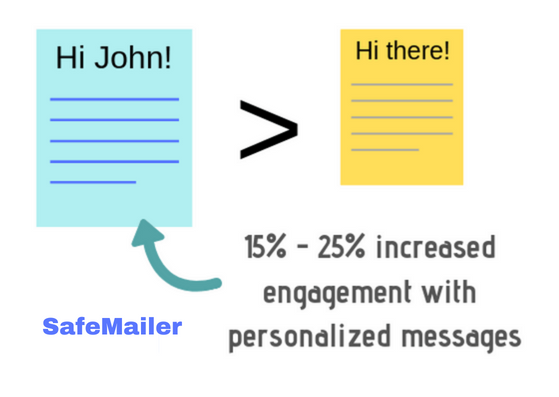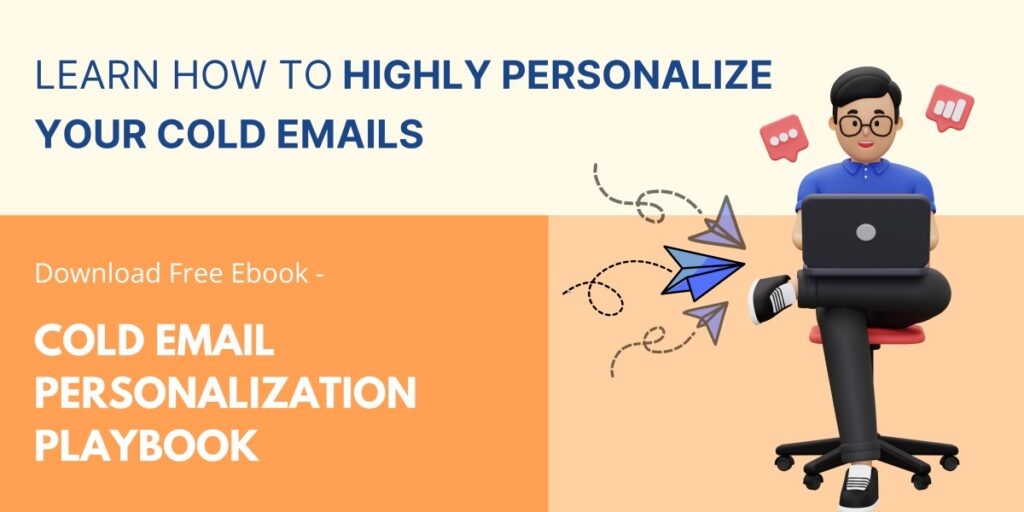In this fast-paced and highly competitive world of digital marketing, businesses are constantly seeking innovative ways to capture the attention of their target audience. While traditional sales-centric email campaigns have long been the norm, they often fail to engage recipients and drive the desired results.
I mean, who wants to open an email only to be bombarded with a bunch of sales pitches and calls to action? Not me, and probably not your customers either.
This is where the power of email storytelling comes into play, revolutionizing the way email marketing is approached. It’s an age-old technique that has been captivating people for centuries, and now it’s making waves in the digital marketing world.
In fact, according to Search Engine Watch, storytelling can increase conversions by up to 30%.
So, let’s dive in and explore why storytelling is essential.
Why storytelling is important in email marketing?
In a world flooded with emails competing for attention, it’s become increasingly challenging to engage and connect with your audience. Email storytelling comes in, offering a unique and powerful way to cut through the noise and leave a lasting impression. The following points highlight how:
Stories evoke empathy and relatability
When you tell a story, you’re able to tap into the emotions and experiences that your audience can relate to. This creates a sense of empathy, as readers can see themselves in the shoes of the characters or connect with the challenges and triumphs portrayed in the story. By evoking these emotions and creating relatable experiences, storytelling helps to forge a deeper connection between your brand and your customers.
Stories make your brand memorable
Let’s face it, we’re bombarded with information every day. Standing out in a sea of marketing messages is no easy task. However, email storytelling has the power to make your brand memorable. When you present information in the form of a story, it becomes more engaging and easier to remember. Your audience is more likely to recall the story you told and associate it with your brand. This memorability gives your brand a competitive edge and helps it to stay top of mind when it comes to purchasing decisions.
Stories captivate attention and engagement:
Picture this: you’re scrolling through your inbox, drowning in a sea of dull and generic emails. But wait! Suddenly, there it is—an email that tells a captivating story right from the subject line. It’s like a magnet pulling you in. That’s the power of email storytelling, my friend. It captures attention and engages your readers from the get-go. It’s not just another sales pitch or a bland promotion—it’s an invitation to embark on a storytelling journey that they can’t resist.
Stories build trust and credibility
In a world where trust is a valuable currency, storytelling can help you build trust and establish credibility with your audience. By sharing authentic stories that showcase your brand’s values, mission, and the experiences of your customers, you demonstrate transparency and authenticity. This transparency builds trust and credibility, as your audience sees the real people and real stories behind your brand. Trust is essential for developing long-term customer relationships and fostering loyalty.
Stories inspire action
At the end of the day, we’re all in this for results, right? Well, email storytelling is a mighty catalyst for driving action and conversions. By crafting narratives that highlight the benefits, value, and impact of your offerings, you inspire your readers to take that next step. Whether it’s making a purchase, signing up for a webinar, or spreading the word about your amazing story, email storytelling motivates your audience to engage and convert. It’s like a virtual cheerleader, urging them to take action!
How to create compelling story-based emails?


First things first, so let’s start by discussing how your email should be structured.
Craft compelling narrative
Every great story follows a simple structure: beginning, middle, and end. And when it comes to structuring your email, you can adopt the classic PAS framework. Here’s a way to put it in simpler terms. It stands for Problem, Agitate, and Solution. Let’s break down each element and see how it can be applied to cold email marketing.
- Problem: To start, paint the picture and introduce the situation. Let your audience know the problem or challenge they’re facing. Build the foundation of your story by setting the scene and creating a sense of familiarity.
- Agitate: Next, ramp up the excitement by introducing conflict. Highlight the consequences or risks of not addressing the problem. This is where you grab their attention and make them curious about how things will unfold. Create tension and a desire for resolution.
- Solution: Finally, it’s time for the resolution. Offer a solution that addresses the problem and provides a clear path to success. Show your audience how they can overcome the challenges and achieve their desired outcome. And don’t forget to include a compelling call to action that motivates them to take the next step.
Here is a template you can refer to,
 |
| Subject: Streamline Your Workflow with #SAAS Company# |
| Hi #Name#, Are you tired of managing multiple tools and struggling to stay organized? Say goodbye to chaos and hello to efficiency with #SAAS Company#. Our powerful software simplifies your workflow, boosts productivity, and enhances collaboration. Imagine managing projects, coordinating teams, and tracking progress effortlessly, all from one intuitive interface. Join the countless businesses that have experienced remarkable growth with #SAAS Company#. Discover how our solution can transform your operations. Click here #CTA: Learn More# to get started. Simplify your workflow and unlock your business’s full potential with #SAAS Company# today! Regards, #Signature# |
 |
By following the PAS framework, you can structure your emails in a way that captures attention, amplifies the problem, and presents a compelling solution. This framework appeals to the emotional and logical aspects of your audience, making your emails more persuasive and engaging.
Create an emotional journey
Emotions are the secret sauce that makes a story memorable. Inject your emails with emotions that resonate with your audience. Make them feel joy, excitement, empathy, or even a good laugh. Take them on an emotional rollercoaster that leaves them wanting more. Trust me, when you strike that emotional chord, your readers will be eagerly awaiting your next email.
Incorporate visuals:
Visuals are another powerful tool in your storytelling arsenal. Visuals not only make your emails visually appealing but also help convey the atmosphere and emotions of your narrative. Use emojis in your subject line to catch their attention and set the tone for your story. Include images, gifs, or even videos within the email copy to bring your story to life. And don’t forget to add a photo to your email signature to add a personal touch.
Don’t sell just tell
When crafting your story-based emails, remember that it’s not just about selling. It’s about building a genuine connection. Instead of bombarding them with sales pitches, focus on delivering a meaningful story that resonates with their needs and desires. By doing so, you’ll naturally create a positive brand perception and increase the likelihood of conversions. People love stories, and they love authentic connections even more.
Personalize the storytelling experience
Personalizing the storytelling experience can truly make your emails shine and create a deeper connection with your audience. Leverage the data you have about your subscribers. Use it to tailor your story to their interests, preferences, and past interactions with your brand. When your readers feel like the story is specifically crafted for them, it sparks a sense of relevance and makes them more engaged.


Conclusion:
Now that you know how impactful email storytelling is, embrace it in your email campaigns.
Craft compelling narratives, create emotional journeys, and focus on building authentic connections.
Your emails will become more than just promotional messages—they will become captivating stories that engage, inspire, and drive meaningful engagement.

Leave a Reply